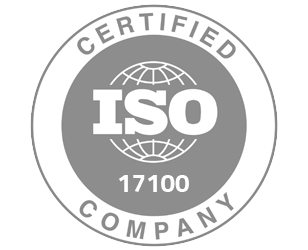
Arabic Localization for Beginners: What Every Brand Should Know
Expanding into new markets is an important step for brands looking to reach a global audience, and the Middle East and North Africa (MENA) region represents a significant opportunity for many industries. With over 420 million Arabic speakers worldwide, providing content in Arabic can help brands establish deeper connections with local consumers. However, the Arabic language presents unique linguistic, cultural, and technical challenges that must be addressed for successful localization. Here’s what every brand needs to know as they embark on their Arabic localization journey.
The Importance of Arabic in Global Markets
Arabic is one of the most widely spoken languages globally. Major growth in e-commerce, technology, and digital media usage across MENA has made the region a prime market for brands seeking new audiences. Localizing your products, services, and marketing materials into Arabic shows respect for local consumers and increases the likelihood of building trust, loyalty, and long-term success in these markets.
Understanding the Dialect Differences
The Arabic language is diverse, with various dialects spoken throughout different regions. While Modern Standard Arabic (MSA) is the formal written standard, spoken dialects can vary significantly—Egyptian, Gulf, Levantine, and Maghrebi Arabic are just a few examples.
For most brands, MSA is typically the best starting point for written content. It’s understood by Arabic speakers in both formal and informal contexts, especially in media, business, and cross-regional communication. However, if your target audience resides in a specific country or locale, you may want to consider a more region-specific or dialect-specific approach, especially for marketing campaigns, slogans, or other high-impact messaging.
Navigating Right-to-Left (RTL) Layout
A significant technical difference between Arabic and most Western languages is the script direction: Arabic is read and written from right to left (RTL). This has implications for website design, user interface (UI), and user experience (UX).
Considerations for RTL Layout:
- Mirroring the Layout: Menus, navigation bars, and page elements need to be reversed. Everything that appears on the left in an English layout generally goes to the right in an Arabic layout.
- Typography and Fonts: Choose fonts that are optimized for Arabic script, ensuring legibility and consistency in style. Some fonts might not render Arabic characters properly.
- Images and Icons: If images contain text or directional elements, they may need to be mirrored or redesigned to fit RTL conventions.
Cultural Sensitivity and Context
Brands must consider cultural norms, values, holidays, symbolism, and religious practices. For instance, depictions of certain imagery might be inappropriate in conservative markets, and references to regional holidays or customs can significantly boost engagement if used respectfully and accurately.
Tips for Cultural Sensitivity:
- Avoid Direct Translations of Idioms: Phrases or humor that work in English may not translate well. Adapt concepts to local contexts.
- Use Appropriate Imagery: Check that your chosen visuals align with cultural norms. Be mindful of modest dress and religious symbols.
- Account for Seasonal or Religious Events: Ramadan, Hajj, and Eid are culturally significant periods that can shape consumer behavior. Tailor campaigns accordingly.
How to Ensure High-Quality Translation and Localization
Relying solely on automated translation tools can lead to errors, awkward phrasing, or cultural faux pas. Instead, work with experienced translators or localization agencies who understand both the linguistic and cultural contexts.
Best Practices:
- Professional Translators: Choose native Arabic speakers familiar with your industry and brand voice.
- In-Country Review: Have local experts review translations to validate linguistic accuracy and cultural appropriateness.
- Term Glossaries: Maintain a glossary of brand-specific terms and style guides to ensure consistency across all materials.
Testing and Iterating
Before launching a localized campaign or product, conducting in-market testing can catch issues that might be overlooked in the development phase. This involves sharing beta versions of your website, app, or marketing content with a sample of the local audience. Gather feedback on everything from linguistic accuracy to user experience, then refine as needed.
Testing Methods:
- Focus Groups: Engage small groups for more in-depth qualitative feedback.
- A/B Testing: Try different messaging or designs to see which resonates more with local users.
- Online Surveys: Collect quantitative data about user satisfaction with localized content.
Monitoring and Continuous Optimization
Localization isn’t a “set it and forget it” process. Language evolves, cultural trends shift, and new events can influence consumer behavior. Regularly monitoring the performance of your Arabic content—and updating it as needed—can help sustain engagement and revenue growth.
Ongoing Strategy:
- Track KPIs: Metrics like page views, conversions, bounce rates, and social media engagement can provide insights.
- Solicit Feedback: Encourage customers to share their experiences, and leverage that feedback to refine your translations and design.
- Stay Informed: Keep an eye on regional news, cultural events, and emerging consumer habits.
Venturing into Arabic-speaking markets can open doors to a vast and growing audience, but successful Arabic localization requires more than just word-for-word translation. It involves cultural understanding, technical know-how for RTL script, dialect strategy, and ongoing optimization. By investing in professional linguists, local insights, and iterative improvements, brands can demonstrate respect for the Arabic-speaking community and position themselves for meaningful, long-lasting success in these dynamic markets.
PoliLingua’s comprehensive localization services can guide your brand through every step of the process—from translation and cultural adaptation to dialect selection and UX considerations—ensuring your message resonates with Arabic-speaking audiences.







